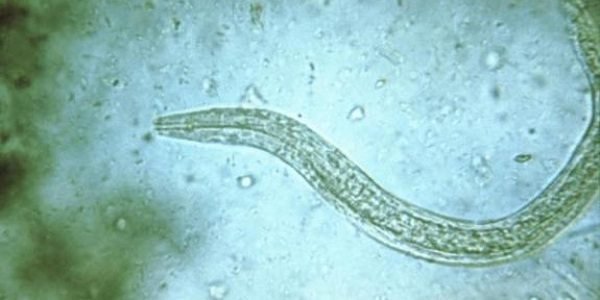Hookworm

Description
Hikeworm or hookworm is a helminthiasis which is caused by a hookworm.
The disease is spread mainly among the population of subtropical regions in South and Central America, South Asia and Africa.
In some of the countries in these regions, up to 50% of the population is infected. Outbreaks of parasitosis are also appearing in Southern Europe, as a more significant one was in Italy, which means that the population of Bulgaria is also potentially at risk.
The source of worming with Ancylistoma duodenale is sick people, and with Ancylostoma braziliens – mostly dogs and cats. The natural susceptibility of man to the parasite is high.
Infection occurs through soil-contaminated fruits, vegetables, berries, herbs, on which the larvae of the helminth may have attached themselves.
The ways of transmission of parasitosis is through food, drinking water and direct contact and inadvertent ingestion of infected soil.
Endemic outbreaks are formed in coal and ore mines due to the high temperature, high humidity and poor sanitary conditions in them.
And in this regard, the risk groups are gardeners, miners and agricultural workers. Young children are at the greatest risk of infection, as they often walk barefoot and have not yet developed the habit of maintaining good personal hygiene.
What are the symptoms?
The incubation period of the disease is 40-60 days. And in most cases, parasitosis is asymptomatic. The more severe manifestation of the symptoms depends on the method of penetration of the helminths into the body.
The most characteristic manifestation of the disease is hypochromic iron deficiency anemia, as the parasite feeds on blood. With its teeth, it attaches itself to the wall of the intestinal mucosa.
Erosions and ulcers with a diameter of up to 2 cm form at the site of attachment, which is why it is possible to start prolonged intestinal bleeding, which provokes the development of iron deficiency anemia.
The levels of blood proteins also decrease – hypoalbuminemia.
The worming also affects the central nervous system, the affected person begins to feel lethargic and sleepy, mental and physical development slows down in children.
What causes it?
The cause of the disease is Ancylostoma duodenale – a round worm /nematode/. The size of the male is 8-11, and the female 10-14, sexually mature individuals inhabit the duodenum – the upper part of the small intestine.
Treatment of hookworm
For the treatment of hookworm, mebendazole /Vermox/ is prescribed for oral administration in the following dose 2 times a day in the morning and in the evening 100 mg each. for 3 consecutive days.
It is contraindicated to take alcohol while taking the medicine. It is not intended for permanent use, as it leads to multiple side effects and damage to the liver and kidneys.
In case of overdose, activated charcoal should be taken for a while.
During drug therapy, the patient should consume lighter foods and avoid very fatty ones.
Prevention
To prevent worming you must thoroughly wash fruits and vegetables, in no case should you consume them if you have not previously washed them.
If you plan to visit places where there is no sewage system, you should drink drinking water only after boiling it for 5 minutes or you can dissolve ½ tablet of iodine in 1 liter of water.
p>
Wear closed shoes when planning to walk in areas where the soil is likely to be contaminated with faecal masses.



